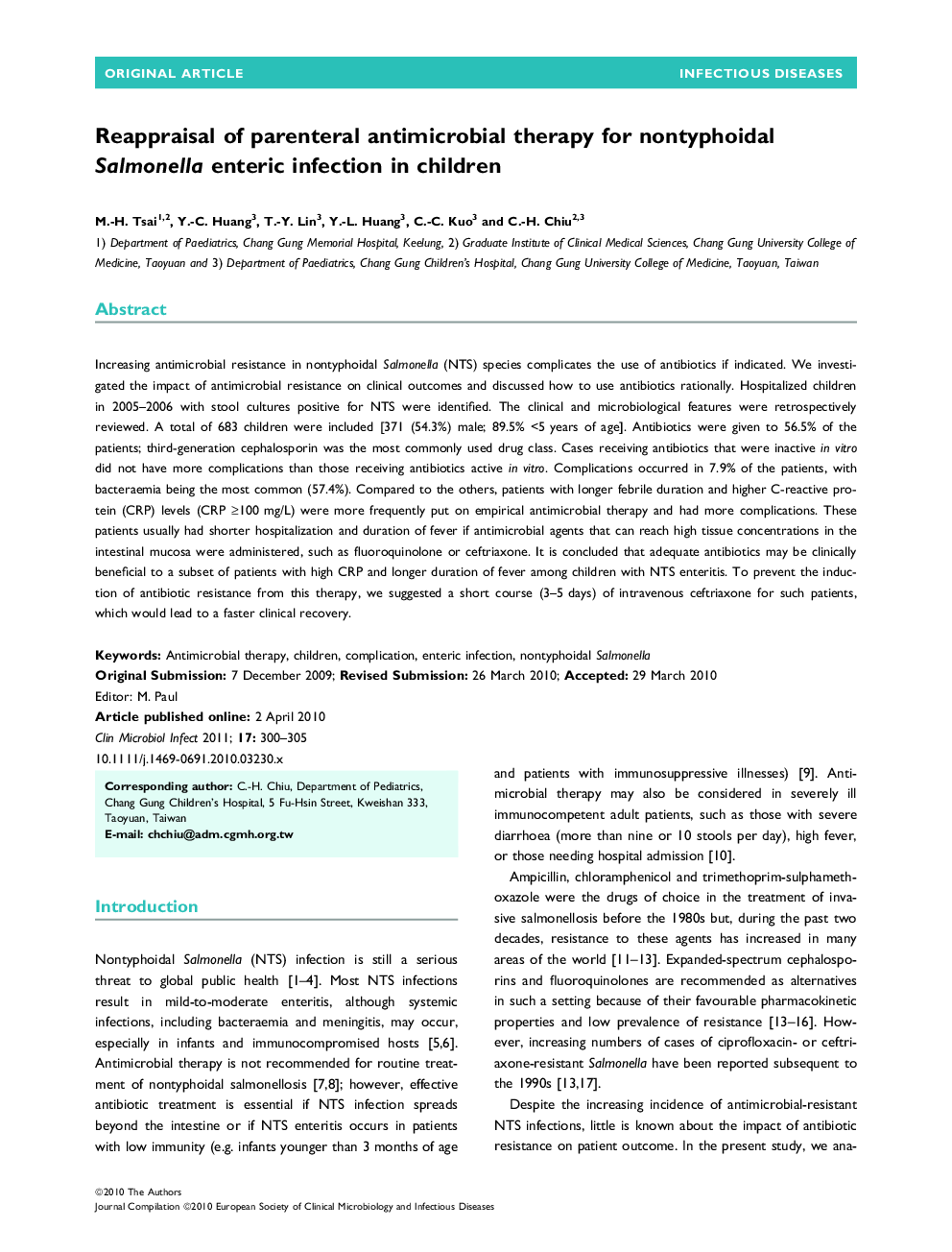| Article ID | Journal | Published Year | Pages | File Type |
|---|---|---|---|---|
| 3397141 | Clinical Microbiology and Infection | 2011 | 6 Pages |
Increasing antimicrobial resistance in nontyphoidal Salmonella (NTS) species complicates the use of antibiotics if indicated. We investigated the impact of antimicrobial resistance on clinical outcomes and discussed how to use antibiotics rationally. Hospitalized children in 2005–2006 with stool cultures positive for NTS were identified. The clinical and microbiological features were retrospectively reviewed. A total of 683 children were included [371 (54.3%) male; 89.5% <5 years of age]. Antibiotics were given to 56.5% of the patients; third-generation cephalosporin was the most commonly used drug class. Cases receiving antibiotics that were inactive in vitro did not have more complications than those receiving antibiotics active in vitro. Complications occurred in 7.9% of the patients, with bacteraemia being the most common (57.4%). Compared to the others, patients with longer febrile duration and higher C-reactive protein (CRP) levels (CRP ≥100 mg/L) were more frequently put on empirical antimicrobial therapy and had more complications. These patients usually had shorter hospitalization and duration of fever if antimicrobial agents that can reach high tissue concentrations in the intestinal mucosa were administered, such as fluoroquinolone or ceftriaxone. It is concluded that adequate antibiotics may be clinically beneficial to a subset of patients with high CRP and longer duration of fever among children with NTS enteritis. To prevent the induction of antibiotic resistance from this therapy, we suggested a short course (3–5 days) of intravenous ceftriaxone for such patients, which would lead to a faster clinical recovery.
